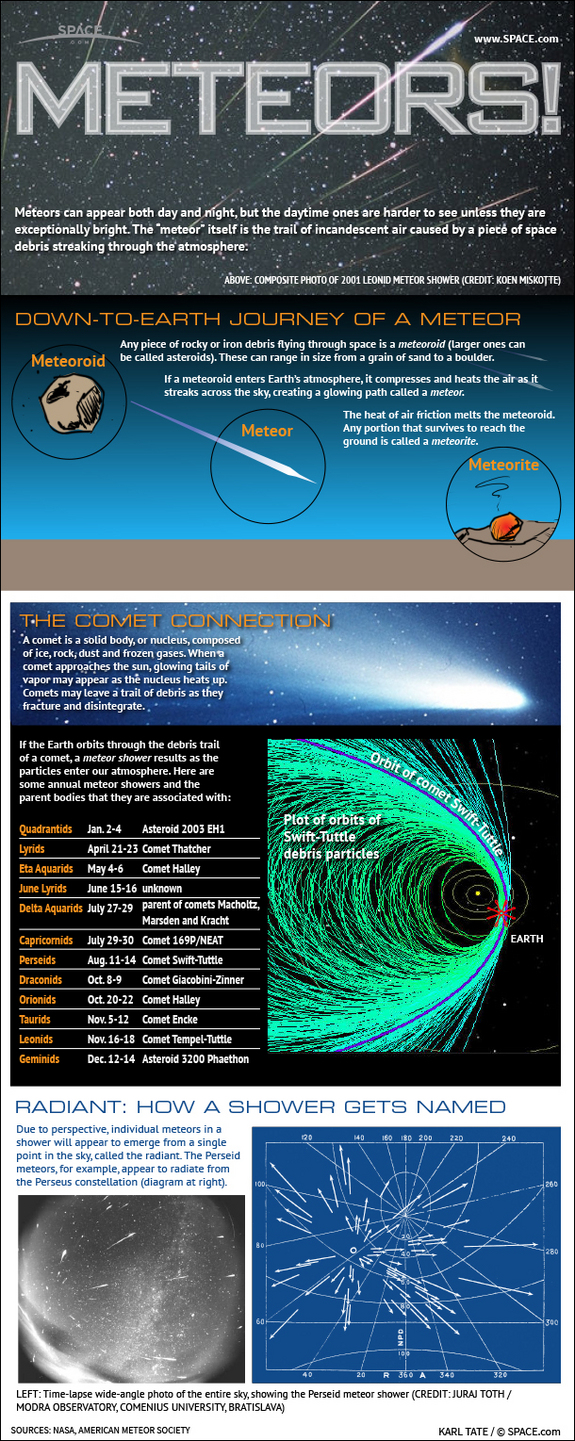With the annual Leonid meteor shower displaying the last of its celestial fireworks, it’s a good time to examine exactly how meteor showers work. Check your meteor knowledge with the infographic below.

Source SPACE.com: All about our solar system, outer space and exploration
Meteors can appear both day and night, but the daytime ones are harder to see unless they are exceptionally bright. The “meteor” itself is the trail of incandescent air caused by a piece of space debris streaking through the atmosphere. Any piece of rocky or iron debris flying through space is a meteoroid (larger ones can be called asteroids). These can range in size from a grain of sand to a boulder.
If a meteoroid enters Earth’s atmosphere, it compresses and heats the air as it streaks across the sky, creating a glowing path called a meteor. The heat of air friction melts the meteoroid. Any portion that survives to reach the ground is called a meteorite. Meteor showers are often connected to comets. A comet is a solid body, or nucleus, composed of ice, rock, dust and frozen gases.
When a comet approaches the sun, glowing tails of vapor may appear as the nucleus heats up. Comets may leave a trail of debris as they fracture and disintegrate. If the Earth orbits through the debris trail of a comet, a meteor shower results as the particles enter our atmosphere. Source: Space.com.























































![A trajectory analysis that used a computational fluid dynamics approach to determine the likely position and velocity histories of the foam (Credits: NASA Ref [1] p61).](http://www.spacesafetymagazine.com/wp-content/uploads/2014/05/fluid-dynamics-trajectory-analysis-50x50.jpg)



Leave a Reply